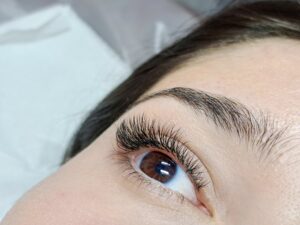An overactive bladder (OAB) can wreak havoc on your life. From restricting intake of fluids to not wanting to venture too far from the nearest restroom, OAB can jeopardize both confidence and independence in one fell swoop.
BOTOX® in the bladder is something that only a qualified and trained physician can perform (usually a urogynecologist). Generally, a patient will bring her concerns to her gynecologist or general practitioner and get a referral to see a specialist who deals with incontinence issues like this.
Medications are usually the first course of treatment for most patients. Dietary changes can also provide some relief. Certain foods can instigate bladder dysfunction in some individuals, so avoiding irritating substances can help to some degree (i.e., soda, artificial sweeteners, dairy).
Pelvic floor muscle exercises are also a primary solution recommended by doctors. This group of muscles is partially responsible for the ability to have muscle control when urgency to urinate (bladder contractions) occur. Strong pelvic floor muscles can help a woman “hold it in” until she can reach the restroom.
What does one do when none of the above works? Today, there’s BOTOX.
How BOTOX Works for Overactive Bladder
This substance contains a neurotoxin that causes paralysis in muscles where it has been injected. In cosmetic uses, botulinum toxinA works to temporarily immobilize facial muscles so that wrinkles are less visible or do not form at all.
In OAB, the bladder is injected with this toxin to help it stop contracting too often or too intensely. This allows the patient to go about her life not feeling the effects of always having to go. Additionally, this treatment helps the patient gain control over when she goes.
A treated bladder will not contract, thus giving the patient fewer instances of urgency to urinate. When these contractions are very strong, such as in individuals with OAB, no matter how strong pelvic floor muscles are, the person is unable to control their urine flow.
How Often is Treatment Necessary?
Unfortunately, this treatment is not a permanent solution where you get injections and don’t have to go back. Every three months or so, you’ll need to have the procedure done again to maintain results. However, it can be done under light sedation so you are kept comfortable throughout the entire injection session.
How Many Injections are Needed?
Generally, about 20 injections are made. One injection will treat a specific radius inside the bladder, and the doctor will move on to cover all of the other areas until full treatment has been achieved. Most patients notice that they have bladder control right away.
BOTOX in Manhattan and Long Island – James Christian Cosmetics
If you’re experiencing OAB symptoms, ask your doctor if BOTOX is right for you. Although I do not provide treatment for this type of condition, I do use BOTOX every day for aesthetic cosmetic purposes.
Injections can provide you with a more youthful look that can smooth away existing wrinkles and prevent new ones from forming. I also offer filler injections to complement your results.
Contact us today at (917) 860-3113 to make an appointment with me, James Christian Sardelli, RPA-C. I have locations in Manhattan and Commack (flagship offices) as well as West Sayville, Rockville Centre, Westhampton Beach, and Farmingdale.
Sources:
https://www.webmd.com/urinary-incontinence-oab/news/20150515/botox-overactive-bladder#1
*BOTOX® is a registered trademark of Allergan, Inc. Consult your doctor for all medical concerns. This information is not a substitute for seeking the advice and treatment of a medical doctor.
*Information in this article is not medical advice and may not be factually accurate. It is intended for entertainment purposes only. Consult with a physician before attempting any tips in this blog post and to get the most up to date factual data about any procedure or treatment.














